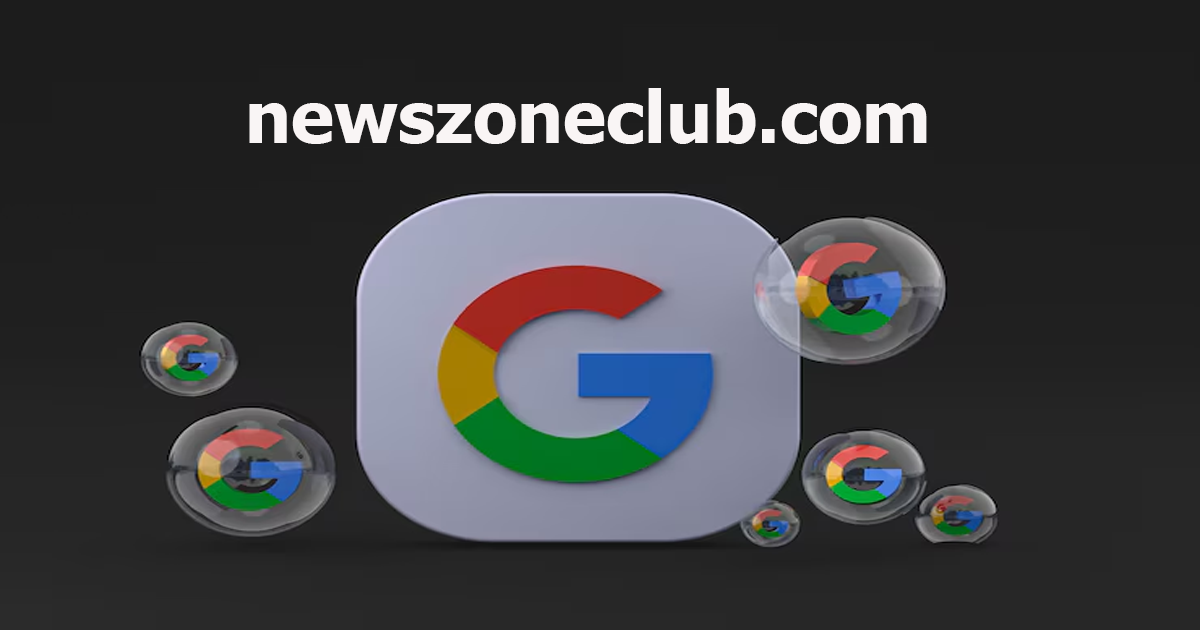Google’s ecosystem is a vast and intricate web of services, tools, and technologies designed to simplify and enhance our digital lives. From search engines to cloud storage, Google’s offerings have become integral to both personal and professional environments. In this comprehensive exploration, we delve into the key components of Google’s ecosystem, highlighting their functionalities and impact.
Google Search: The Core of the Ecosystem
At the heart of Google’s ecosystem is Google Search, the world’s most popular search engine. Launched in 1997, it has revolutionized the way we access information. Google’s search algorithms use complex data structures and machine learning to deliver the most relevant results in a fraction of a second.
Key Features of Google Search:
- Search Algorithms: Constantly evolving, Google’s algorithms prioritize high-quality, relevant content. This includes updates like Panda, Penguin, and Hummingbird, which aim to penalize low-quality sites and reward those that provide valuable information.
- Knowledge Graph: This feature enhances search results with a semantic-search database, providing answers directly on the search page.
- Voice Search: Integrating AI, Google Voice Search allows users to search the web using natural language commands, making information retrieval more intuitive.
Google Workspace: Revolutionizing Office Productivity
Formerly known as G Suite, Google Workspace offers a suite of cloud-based productivity and collaboration tools. These tools are designed to streamline workflows and enhance productivity for businesses and individuals alike.
Components of Google Workspace:
- Gmail: A robust email service with advanced spam filtering, customizable themes, and integration with other Google services.
- Google Drive: Cloud storage that offers seamless file sharing and collaboration. With 15GB of free storage, users can store documents, photos, and videos securely.
- Google Docs, Sheets, and Slides: Online document, spreadsheet, and presentation tools that support real-time collaboration. Users can work together from different locations, seeing changes live.
- Google Meet: A video conferencing tool that supports high-definition video calls, screen sharing, and recording, catering to the needs of remote teams and virtual meetings.
Google Cloud Platform: Powering Innovation
Google Cloud Platform (GCP) is a suite of cloud computing services that runs on the same infrastructure that Google uses internally. It provides a range of services including computing, storage, and application development.
Key Offerings of GCP:
- Compute Engine: Virtual machines that run on Google’s infrastructure, offering scalable and secure computing power.
- App Engine: A platform-as-a-service (PaaS) for developing and hosting web applications in Google-managed data centers.
- BigQuery: A fully-managed, serverless data warehouse that enables super-fast SQL queries using the processing power of Google’s infrastructure.
- Kubernetes Engine: A powerful orchestration system for deploying, managing, and scaling containerized applications using Kubernetes.
Android: Dominating the Mobile OS Market
Android is Google’s open-source mobile operating system, which powers billions of devices worldwide. It offers a customizable user experience and a vast ecosystem of apps through the Google Play Store.
Features of Android:
- Customization: Users can tailor their device interfaces, install third-party apps, and even modify system settings.
- Google Play Store: The primary marketplace for Android apps, offering millions of apps and games.
- Security: Regular updates and built-in security features protect devices from malware and vulnerabilities.
YouTube: The World’s Leading Video Platform
YouTube, acquired by Google in 2006, is the leading platform for video content. It hosts a vast array of videos, from user-generated content to professional productions.
Key Aspects of YouTube:
- Content Diversity: Ranging from educational videos and music to gaming and vlogs, YouTube offers content for all interests.
- Monetization: Content creators can earn revenue through ads, channel memberships, and super chats during live streams.
- YouTube Analytics: Provides insights into viewer demographics, behavior, and engagement, helping creators optimize their content.
Google Maps: Navigating the World
Google Maps is a comprehensive mapping service that offers real-time navigation, traffic conditions, and route planning for various modes of transportation.
Core Features of Google Maps:
- Real-Time Navigation: Provides turn-by-turn navigation for drivers, cyclists, and pedestrians.
- Street View: Allows users to explore places around the world through 360-degree panoramic street-level imagery.
- Local Business Listings: Users can find and review local businesses, enhancing community engagement and visibility.
Google Ads: Driving Online Advertising
Google Ads is a powerful online advertising platform that allows businesses to reach potential customers through targeted ads. It supports various ad formats, including search ads, display ads, video ads, and app ads.
Benefits of Google Ads:
- Targeting: Advanced targeting options allow advertisers to reach specific demographics, interests, and locations.
- Performance Tracking: Detailed analytics help advertisers track the performance of their campaigns and optimize them for better results.
- Cost Control: Advertisers can set budgets and bid strategies to control their ad spend effectively.
Google Analytics: Insights for Better Decisions
Google Analytics is a web analytics service that tracks and reports website traffic, providing valuable insights into user behavior and engagement.
Key Features of Google Analytics:
- Real-Time Data: Monitor current user activity on your site and understand how users are interacting with your content.
- Audience Insights: Gain a deep understanding of your audience demographics, interests, and behavior.
- Conversion Tracking: Measure the success of your marketing efforts by tracking conversions and sales.
Google Home: Smart Home Integration
Google Home is a line of smart speakers and home automation products powered by Google Assistant. It enables users to control smart home devices, play music, and access real-time information through voice commands.
Key Aspects of Google Home:
- Voice Control: Users can control smart home devices, such as lights and thermostats, using voice commands.
- Integration: Seamlessly integrates with other Google services and third-party smart devices.
- Personalization: Provides personalized responses and recommendations based on user preferences and habits.
Google Photos: Advanced Photo Management
Google Photos offers unlimited photo storage with advanced organization and search capabilities. It uses machine learning to categorize and enhance photos automatically.
Features of Google Photos:
- Unlimited Storage: Store photos and videos in high quality without worrying about space.
- Automatic Organization: Photos are automatically categorized by people, places, and things, making them easy to find.
- Editing Tools: Built-in editing tools allow users to enhance and personalize their photos.
Google Play: The Digital Media Hub
Google Play is Google’s digital distribution service, offering a vast array of apps, games, music, movies, and books. It is the primary source for Android users to download content.
Offerings of Google Play:
- Apps and Games: Millions of apps and games available for download, catering to diverse interests and needs.
- Media Content: Users can purchase or rent movies, TV shows, music, and books.
- Subscription Services: Google Play offers subscription services like Google Play Pass and YouTube Music Premium for enhanced user experiences.
Google’s ecosystem is a testament to its innovation and commitment to improving digital experiences. By integrating a multitude of services and tools, Google not only simplifies daily tasks but also drives technological advancements across various domains.
FAQs: Exploring Google’s Ecosystem
What is Google’s ecosystem?
Google’s ecosystem encompasses a wide range of services, tools, and technologies developed by Google. These include Google Search, Google Workspace, Google Cloud Platform, Android, YouTube, Google Maps, Google Ads, Google Analytics, Google Home, Google Photos, and Google Play, among others. Each component is designed to provide users with seamless and integrated digital experiences.
How does Google Search work?
Google Search uses advanced algorithms and machine learning to deliver relevant search results. It crawls and indexes billions of web pages, evaluating factors like content quality, relevance, and user experience. Features like the Knowledge Graph and Voice Search enhance its capabilities, providing users with direct answers and a more intuitive search experience.
What is Google Workspace?
Google Workspace (formerly G Suite) is a collection of cloud-based productivity and collaboration tools. It includes Gmail, Google Drive, Google Docs, Sheets, Slides, and Google Meet. These tools help users manage their emails, store and share files, create documents, spreadsheets, and presentations, and conduct video meetings, all while facilitating real-time collaboration.
What services does Google Cloud Platform offer?
Google Cloud Platform (GCP) offers a variety of cloud computing services, including Compute Engine (virtual machines), App Engine (web application hosting), BigQuery (data warehousing), and Kubernetes Engine (container orchestration). These services enable businesses to build, deploy, and scale applications efficiently on Google’s infrastructure.
How does Android fit into Google’s ecosystem?
Android is an open-source mobile operating system developed by Google. It powers a majority of smartphones and tablets worldwide. Android provides a customizable user interface, access to the Google Play Store for apps and games, and robust security features. It integrates seamlessly with other Google services, enhancing the overall user experience.
What are the key features of YouTube?
YouTube is the world’s leading video platform, offering a vast array of content, from user-generated videos to professional productions. Key features include content diversity, monetization options for creators (ads, memberships, super chats), and YouTube Analytics for performance insights. It supports a global community of content creators and viewers.
What can you do with Google Maps?
Google Maps provides real-time navigation, traffic updates, and route planning for various modes of transportation (driving, walking, cycling, and public transit). It features Street View for exploring places through 360-degree imagery and local business listings for finding and reviewing businesses. Google Maps enhances travel planning and local exploration.
How does Google Ads work?
Google Ads is an online advertising platform that allows businesses to create targeted ads for potential customers. Advertisers can choose from different ad formats, such as search ads, display ads, video ads, and app ads. The platform offers advanced targeting options, performance tracking, and cost control features to optimize ad campaigns.
What insights can you gain from Google Analytics?
Google Analytics provides detailed insights into website traffic and user behavior. Key features include real-time data monitoring, audience demographics and interests, and conversion tracking. These insights help businesses understand their audience, measure the success of their marketing efforts, and make informed decisions to improve website performance.
What is Google Home and how does it work?
Google Home is a line of smart speakers and home automation products powered by Google Assistant. It allows users to control smart home devices, play music, and access real-time information through voice commands. Google Home integrates with other Google services and third-party smart devices, offering a personalized and connected home experience.
What are the benefits of using Google Photos?
Google Photos offers unlimited storage for high-quality photos and videos, automatic organization, and powerful search capabilities. It uses machine learning to categorize photos by people, places, and things, making them easy to find. Built-in editing tools allow users to enhance and personalize their photos, providing a comprehensive photo management solution.
What is available on Google Play?
Google Play is Google’s digital distribution service, offering a wide range of apps, games, music, movies, and books. It is the primary source for Android users to download content. Google Play also offers subscription services like Google Play Pass and YouTube Music Premium, providing enhanced user experiences with access to exclusive content.
Keep Reading:
The Impact of Google on Modern Technology and Society





